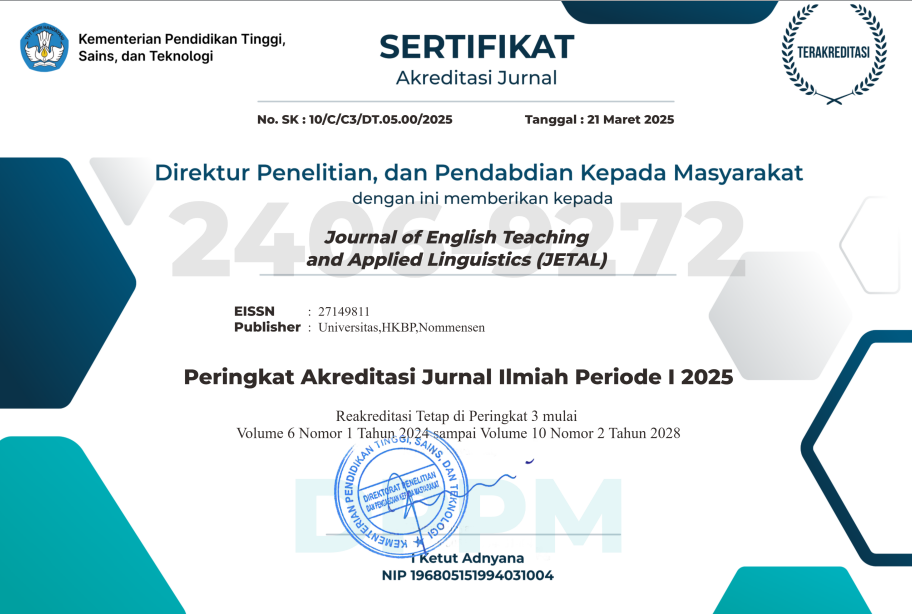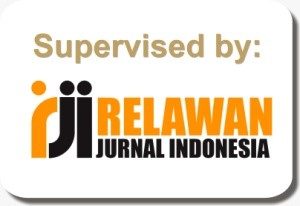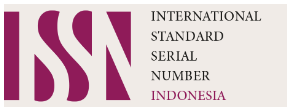TRANSITION SIGNALS USED IN SHORT STORIES
Abstract
The purpose of this study is to find out types and the dominant one of transition signals used in short stories. Research method used in this study is descriptive qualitative by doing library research. The data were collected by analyzing the transition signal used in five short stories. The results shows that the transition signals used in short stories are the transition signal indicates time, comparison, additional idea, and contrast. The dominant transition signal used is the transition signal indicates additional idea. The findings shows that the transition signal used on the five short stories is developed in a single central theme.
References
Christine Reynier. (2018). Review of Woolfs essays. On line:
Cliff. (2018) The definition of short stories. On line: http://www.cliffnotes.com
Frank, Marcella. 1983. Writer’s Companion. New Jersey: Prentice Hall.
G. Kriszner, Laurie., R, Mandell, S. (1985). Writing A Collage Rhetoric. United States of America: Von Hoffman Press.
G. Kriszner, Laurie., R, Mandell, S. (1989). The Holt Handbook. Philadelpia: Holt Rienhart and Winson Inc.
Harbrace. (1968). English Language analysis. London: The Falmer Press.
Joseph (1970). Language System Analysis. Sydney: Sydney University
Oshima, A & Hogue, A (1991). Writing Academic English. Newjersey: Prentice hall.
Lin yutang. (2018). The purpose of short stories. On line : https//www
goodreads.com
McMurrey, A, David. (1983). Writing Fundamental. New York: McMillan Publishing Co.
Morris. (1981). Educational Research. London : MPG Books Ltd. Bodmin, Cornwall
Procter. (1981). Language in interaction. London : Pinter Publishers.
Smoke, T. (1987). A Writer’s Workbook. United States of America: St. Martin’s Press.
Tampubolon. S (2014). Students Ability in avoiding Misplaced Dangling Modifier in Writing Paragraph. Suluh Vol. 1.(1) 2014.pp (11-19)
Tankel, Sylvia. (1989). Short Story International. United States of America: International Cultural Exchange.
Vincent (1984). Writing’s building. Great Britain: Antony Rowe Ltd, Chippenham and Eastbourne.
Authors retain copyright and grant the journal right of first publication with the work simultaneously licensed under a Creative Commons Attribution-ShareAlike 4.0 International License (CC BY-SA 4.0) that allows others to share the work with an acknowledgment of the work's authorship and initial publication in this journal.
Authors are able to enter into separate, additional contractual arrangements for the non-exclusive distribution of the journal's published version of the work (e.g., post it to an institutional repository or publish it in a book), with an acknowledgment of its initial publication in this journal.
Authors are permitted and encouraged to post their work online (e.g., in institutional repositories or on their website) prior to and during the submission process, as it can lead to productive exchanges, as well as earlier and greater citation of published work (See The Effect of Open Access).






